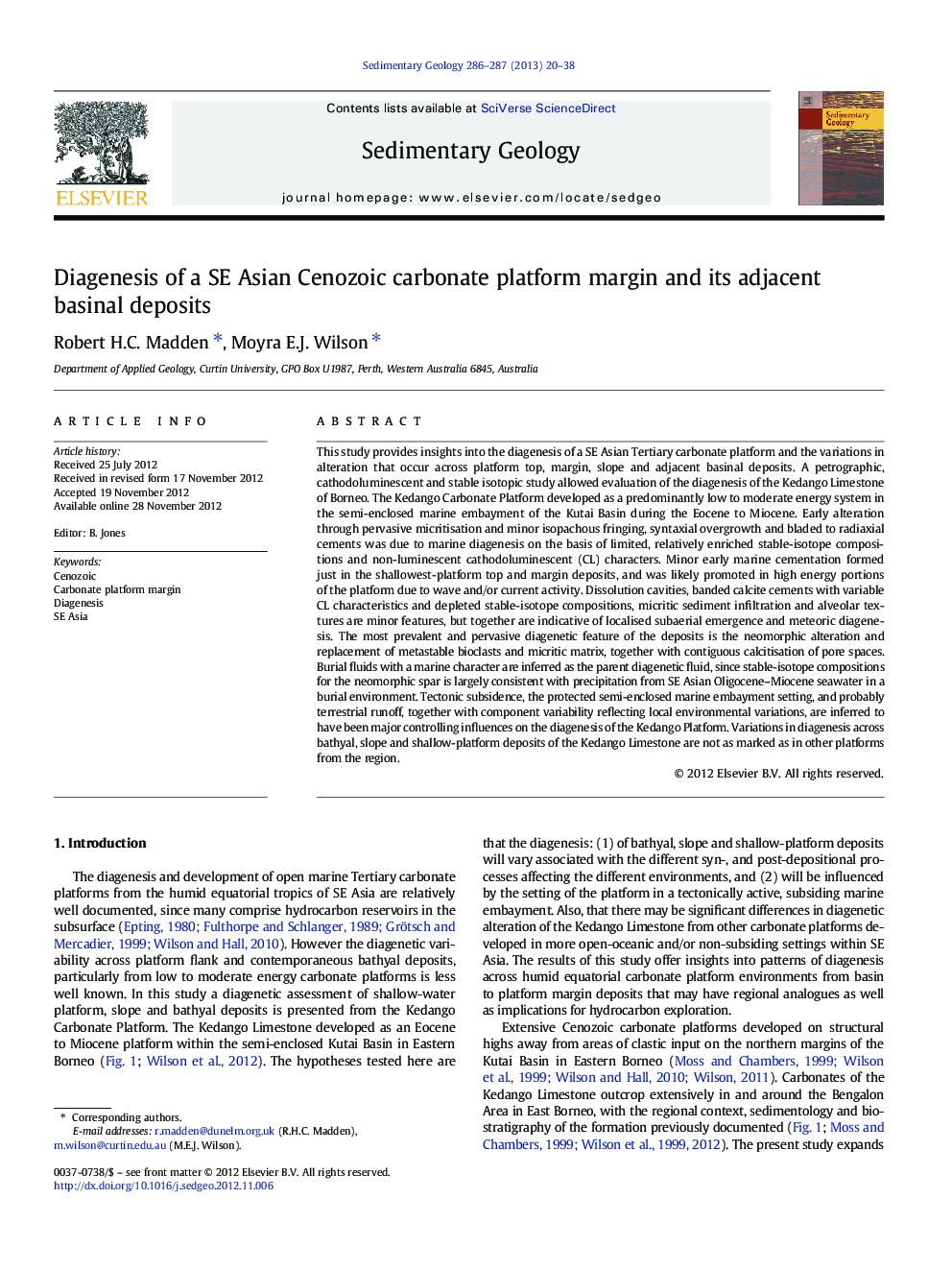| کد مقاله | کد نشریه | سال انتشار | مقاله انگلیسی | نسخه تمام متن |
|---|---|---|---|---|
| 4689568 | 1636076 | 2013 | 19 صفحه PDF | دانلود رایگان |

This study provides insights into the diagenesis of a SE Asian Tertiary carbonate platform and the variations in alteration that occur across platform top, margin, slope and adjacent basinal deposits. A petrographic, cathodoluminescent and stable isotopic study allowed evaluation of the diagenesis of the Kedango Limestone of Borneo. The Kedango Carbonate Platform developed as a predominantly low to moderate energy system in the semi-enclosed marine embayment of the Kutai Basin during the Eocene to Miocene. Early alteration through pervasive micritisation and minor isopachous fringing, syntaxial overgrowth and bladed to radiaxial cements was due to marine diagenesis on the basis of limited, relatively enriched stable-isotope compositions and non-luminescent cathodoluminescent (CL) characters. Minor early marine cementation formed just in the shallowest-platform top and margin deposits, and was likely promoted in high energy portions of the platform due to wave and/or current activity. Dissolution cavities, banded calcite cements with variable CL characteristics and depleted stable-isotope compositions, micritic sediment infiltration and alveolar textures are minor features, but together are indicative of localised subaerial emergence and meteoric diagenesis. The most prevalent and pervasive diagenetic feature of the deposits is the neomorphic alteration and replacement of metastable bioclasts and micritic matrix, together with contiguous calcitisation of pore spaces. Burial fluids with a marine character are inferred as the parent diagenetic fluid, since stable-isotope compositions for the neomorphic spar is largely consistent with precipitation from SE Asian Oligocene–Miocene seawater in a burial environment. Tectonic subsidence, the protected semi-enclosed marine embayment setting, and probably terrestrial runoff, together with component variability reflecting local environmental variations, are inferred to have been major controlling influences on the diagenesis of the Kedango Platform. Variations in diagenesis across bathyal, slope and shallow-platform deposits of the Kedango Limestone are not as marked as in other platforms from the region.
Journal: Sedimentary Geology - Volumes 286–287, 15 March 2013, Pages 20–38